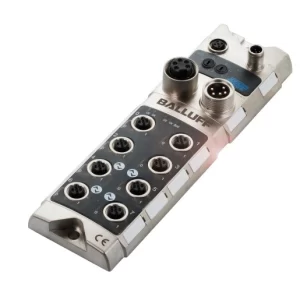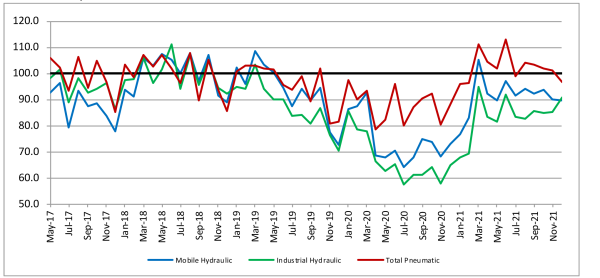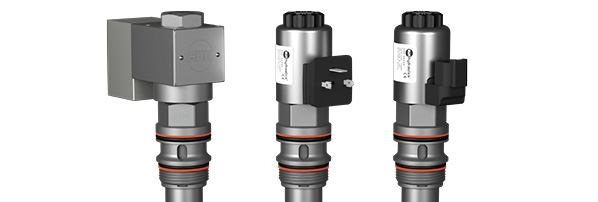Case Study: Connecting the Hydraulics of an African Dam

By Wolfgang Zosel, Balluff.
As an enabler of high-performance Industry 4.0 concepts, IO-Link has become indispensable in tool machine engineering and in production facilities. Hydroelectric power plants can also be wired quickly and efficiently using IO-Link in their hydraulics systems.
At the Mount Coffee Hydropower dam on the Saint Paul River in the west African nation of Liberia, an intelligent IO-Link installation connects the hydraulic structures to dozens of sensors and actuators over long distances, saving time and money. IO-Link additionally delivers data for improved diagnostics and maintenance.
After more than 20 years of interruption, the dam’s four turbines began feeding 22 megawatts each into the power grid. The origins of the Mount Coffee dam, which lies 30 kilometers northeast of the capital, Monrovia, go far back. The dam was built in 1966 but largely destroyed during the Liberian Civil War from 1989 to 2003. By the time the Liberia Electricity Corporation had contracted an international consortium of companies to rebuild the dam, extensive parts of the plant had literally turned to grass.
The job included the complete rebuilding of the hydraulic steel structures, consisting of the electronics, drive technology, and control systems. The dam’s ten radial gates and four intake gates for the turbines needed refurbishing. The radial gates control the water level on the upstream face of the reservoir and are driven by cable winches. The intake gates bring the water to the turbines and block the inflow (shut-off valve) if a fault such as a break in a pressure line occurs. The drive is hydraulic, including electric and hydraulic drive units as well as various supporting systems.
The Mount Coffee dam, 160 meters long with 10 radial gates each 15 meters wide, is not the largest of its kind. Nevertheless, several dozen analog and digital signals must be collected across the entire dam over long distances and made available to the control level.
In terms of the complexity, the numerous tasks to be performed in the peripherals, and the required level of networking, the dam is essentially a widely distributed industrial system, according to Bernd Schneider, Balluff’s industry manager for energy. Balluff developed IO-Link as part of the founding consortium in 2006. Today IO-Link is a global standard (IEC 61131-9) for setting up intelligent solutions for industrial automation.
As a point-to-point connection with a high degree of standardization, the universal interface is indispensable for Balluff and its customers. Not least when simple wiring, overview, and the highest requirements for diagnostics and configuration are high on the wish list. And this is almost always the case in today’s highly automated systems.
Time and increasing cost pressures are also a central topic in power plant construction. It is presumed that systems integrators will thoroughly test their components themselves before they are installed in the shortest possible time far from home, where they must function smoothly and error-free within the overall system.
In many areas of the industry, copper cable and junction boxes are still used all the way up to the control level, representing a huge investment in materials and time. IO-Link is a game changer. The digital interface is a point-to-point connection independent of a field bus, a single standard industry line is required. The digital technology enables the exchange of process and service data, as well as events and analog signals, with the best signal quality. This way customers can monitor the sensors within the production process down to the last meter and perform diagnoses
Working with other contracted companies, Balluff engineers developed a coherent electronics concept with the goal of simple wiring, standardization, and modularity. Two Balluff IO-Link masters are installed in a switch box at each of the 10 radial and four inlet gates to collect up to 20 different signals in the field. The signals originate from inductive or mechanical limit switches, sensors for determining the rotation direction of the radial gates, control-, regulating- and shutoff valves, signal lamps, and illuminated switches.
Two IO-Link masters are installed at each hydraulic station for linking the involved sensors and actuators there as well. Without exception, the components in the field are connected using three-wire standard cable type and M12 connectors. Where analog signals from a particular sensor cannot be directly processed, a compact Balluff adapter plug converts the analog signal into a noise-immune digital signal. Stub lines from a Balluff IO-Link master carry the data to the control level via Profibus DB. Because the system is redundant, the wire is divided in two sections, with a maximum of 75 meters of cable required.
Using standardized cable and connectors instead of individual wiring cuts the cabling time in half. And with IO-Link, each module can be tested in advance at the factory and simply plugged in, which noticeably reduces costs. Wiring mistakes are virtually eliminated, while IO-Link also saves space and provides a clear overview. Internationally active companies especially appreciate the advantage that IO-Link can be used essentially with any bus system: the complete structure beneath the bus level always remains the same, only the bus nodes need to be adapted for a particular country.
The bidirectional communication standard provides greater perspective in other ways. The IO-Link diagnostics information enables quick localization for fault and error correction, which reduces unnecessary downtimes. This is a benefit wherever systems aren’t located close by, and specialized personnel are not available when issues arise. With IO-Link remote, maintenance down to the process level is possible. In addition to clear diagnostics and action instructions when a fault occurs, preventive maintenance concepts are easy to implement.
The offering of universally applicable IO-Link products, including those with built-in condition monitoring capabilities, continues to grow. For the user, this brings further opportunities for optimization in wiring, diagnostics, and configuring.







